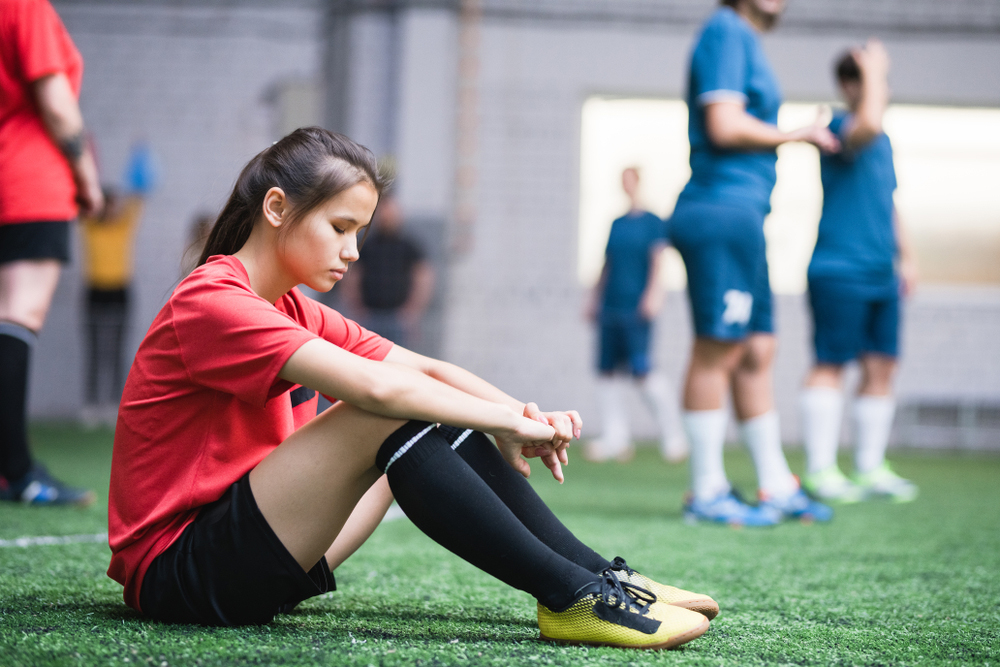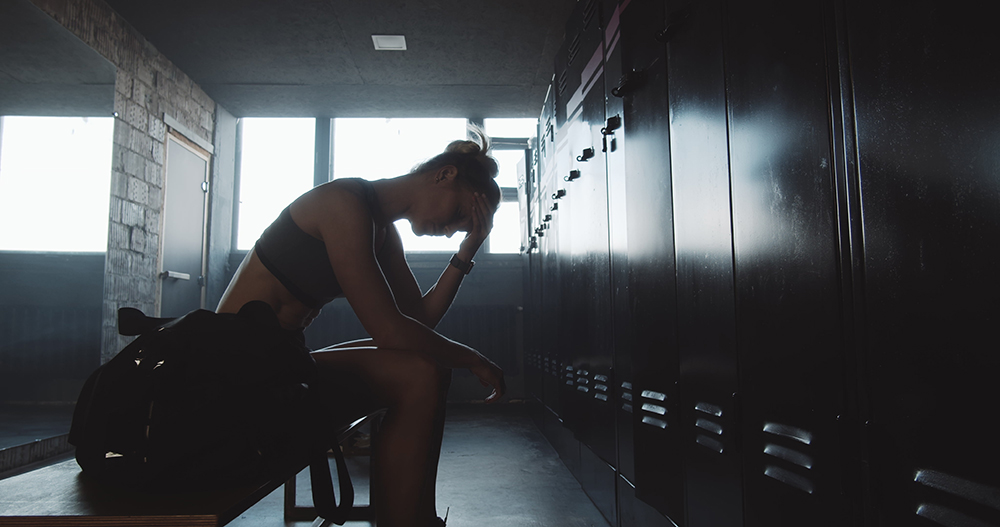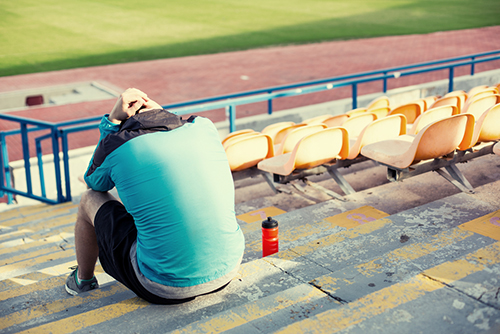 Overtraining is more common than you might expect in young athletes, especially athletes who are extremely focused on one sport and/or committed to multiple teams. Caught early, overtraining can be addressed effectively. Left too long, it can lead to burnout, injury, and other long-term consequences that require prolonged periods of recovery.
Overtraining is more common than you might expect in young athletes, especially athletes who are extremely focused on one sport and/or committed to multiple teams. Caught early, overtraining can be addressed effectively. Left too long, it can lead to burnout, injury, and other long-term consequences that require prolonged periods of recovery.
Michele LaBotz, TrueSport Expert and sports medicine physician, has seen many athletes struggle with overtraining and knows how difficult it can be to recover. Here, she shares the main symptoms of potential overtraining and offers some advice on how to recognize warning signs within your team.
1. Understand overtraining
“True overtraining syndrome affects multiple systems in the body,” explains LaBotz. “This includes effects on function of the brain and the nervous system, as well as increases in the release of stress-related hormones that interfere with the body’s ability to recover and build strength and power.”
“Overtraining doesn’t happen over days to weeks; it happens over weeks to months, often when there are additional stressors outside of sport, like issues in school, or with family or friends.” The overtraining symptoms we discuss here are ones you can hopefully spot early enough to help your athlete pull back and fully recover, rather than sinking deeper into a more difficult-to-repair state of overtraining, from which it can take months to come back.
2. Decreased performance
 If you have an athlete on your team who’s training hard, yet their performance is not continuing to improve, that’s an indicator the current regimen isn’t working, and overtraining is a distinct possibility. “Stagnant or decreased performance is probably the first thing that a coach is going to notice,” LaBotz says. “Coaches generally can gauge how a workout affects an athlete. For any given workout intensity, if someone overtrains, that workout is going to feel a lot harder and they’re going to struggle more to get it done.”
If you have an athlete on your team who’s training hard, yet their performance is not continuing to improve, that’s an indicator the current regimen isn’t working, and overtraining is a distinct possibility. “Stagnant or decreased performance is probably the first thing that a coach is going to notice,” LaBotz says. “Coaches generally can gauge how a workout affects an athlete. For any given workout intensity, if someone overtrains, that workout is going to feel a lot harder and they’re going to struggle more to get it done.”
Keep in mind that many young athletes are on multiple sports teams, whether it’s school and club commitments for the same sport, or playing multiple sports in one season. Often, this can lead to overtraining simply because coaches are unaware of the overall training load on the athlete. If you notice other signs of overtraining and sense that an athlete is over-scheduled and over-committed, have a discussion with them. You may realize that they’re doing significantly more training than you realized, and you can help them organize their schedule into a more reasonable set of practices.
3. Fatigue and noticeable exhaustion
Continuous, unrelenting fatigue is a symptom of overtraining, says LaBotz. Take note of athletes nodding off during down time, as well as signs of poor sleep, like an inability to concentrate or a tired appearance on a regular basis. High school athletes are certainly prone to fatigue and exhaustion as they balance school, work, sport, and social lives, but a young athlete should be able to bounce back from a few nights of reduced sleep, while an athlete who is already on the brink of overtraining may be pushed over the edge by a couple of extra all-nighters. “Is the athlete having fatigue that’s carrying on throughout the whole day? How does the athlete feel when they wake up in the morning? If there is fatigue accumulating over time, that’s a problem,” LaBotz adds.

4. Increased frequency of injury
If an athlete has a recurring injury or poor recovery from minor injuries, then it’s a strong signal that they aren’t recovering enough and are at risk of being overtrained, says LaBotz. Often, it’s tempting to try quick fixes or minimal time-off for minor injuries. But if an athlete is going through cycles of injury-recovery-play-injury, that may actually be a signal of a larger issue with overtraining.
5. Increased frequency of illness
Frequent bouts of being sick (e.g., recurring colds, bronchitis, or a cough that won’t go away) can signal that an athlete is unable to fully recover between practices. If you notice an athlete with a mild illness that persists or recurs, that’s a sign that your athlete may need more time off to fully recover before returning to play.
6. Moodiness and change in normal behavior
Lack of motivation is a major indicator of overtraining, says LaBotz. If you have an athlete who typically assumes the role of team leader or cheerleader, but becomes less enthusiastic at practices or competitions, then it’s a strong warning sign of problems. “This can be tricky, since obviously, a lot of factors can change an athlete’s motivation. Is your athlete lacking motivation because they are overtrained, or because something else is going on in their life? This is where the art of coaching comes in: Opening the lines of communication between the coach and athlete in these cases is so important to determine the underlying cause for change in performance.”
is a major indicator of overtraining, says LaBotz. If you have an athlete who typically assumes the role of team leader or cheerleader, but becomes less enthusiastic at practices or competitions, then it’s a strong warning sign of problems. “This can be tricky, since obviously, a lot of factors can change an athlete’s motivation. Is your athlete lacking motivation because they are overtrained, or because something else is going on in their life? This is where the art of coaching comes in: Opening the lines of communication between the coach and athlete in these cases is so important to determine the underlying cause for change in performance.”
_______________________
Takeaway
Overtraining can be hard to catch before it becomes a problem for an athlete, so pay close attention to athletes and watch for changes in performance, fatigue levels, behavior, and mood. Create an open-door policy for athletes so that they feel comfortable coming to you when they aren’t feeling great. That way, you can hopefully address issues before they impact an athlete’s long-term health and performance.




